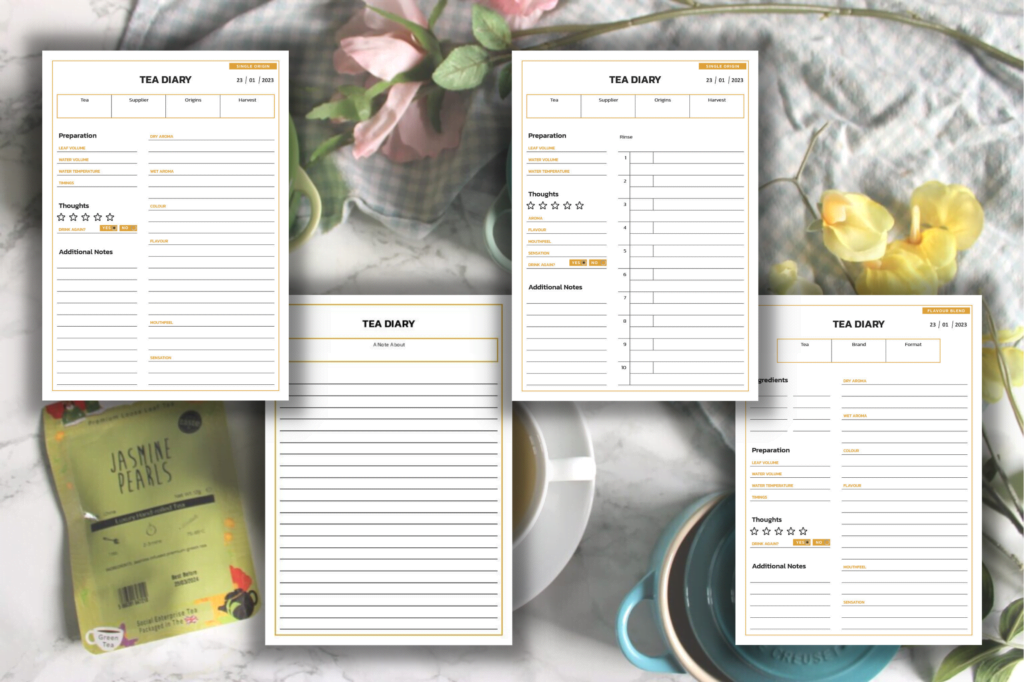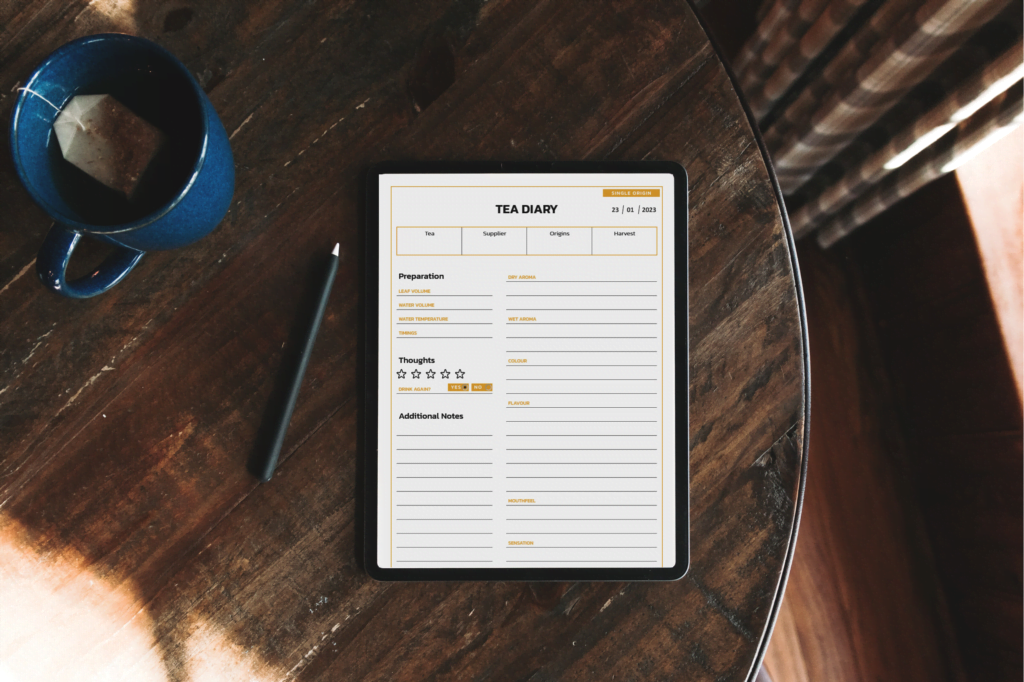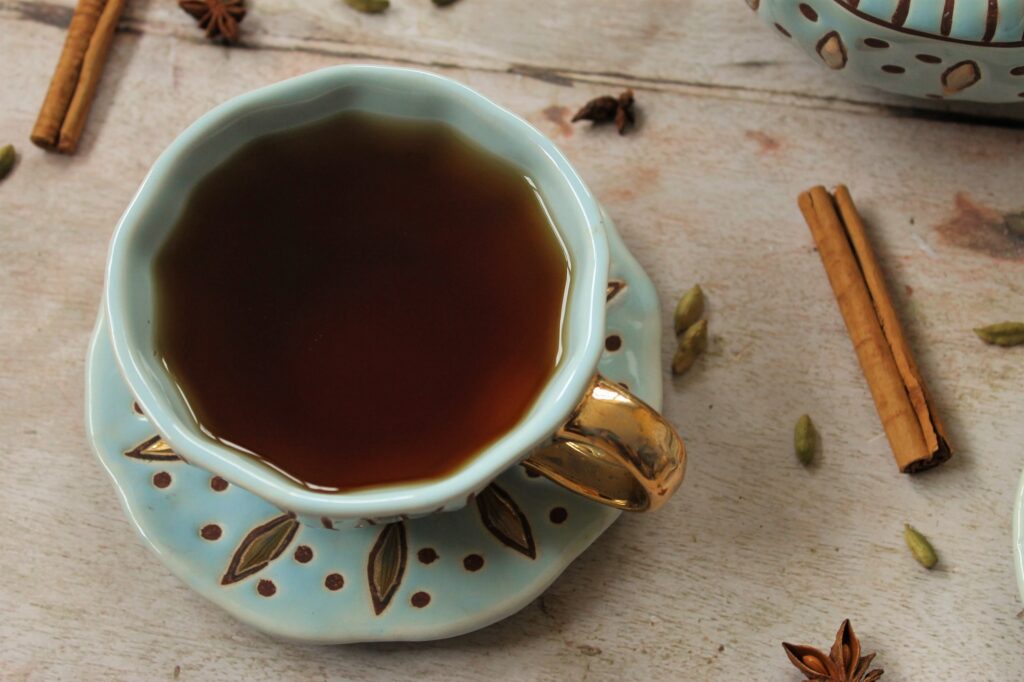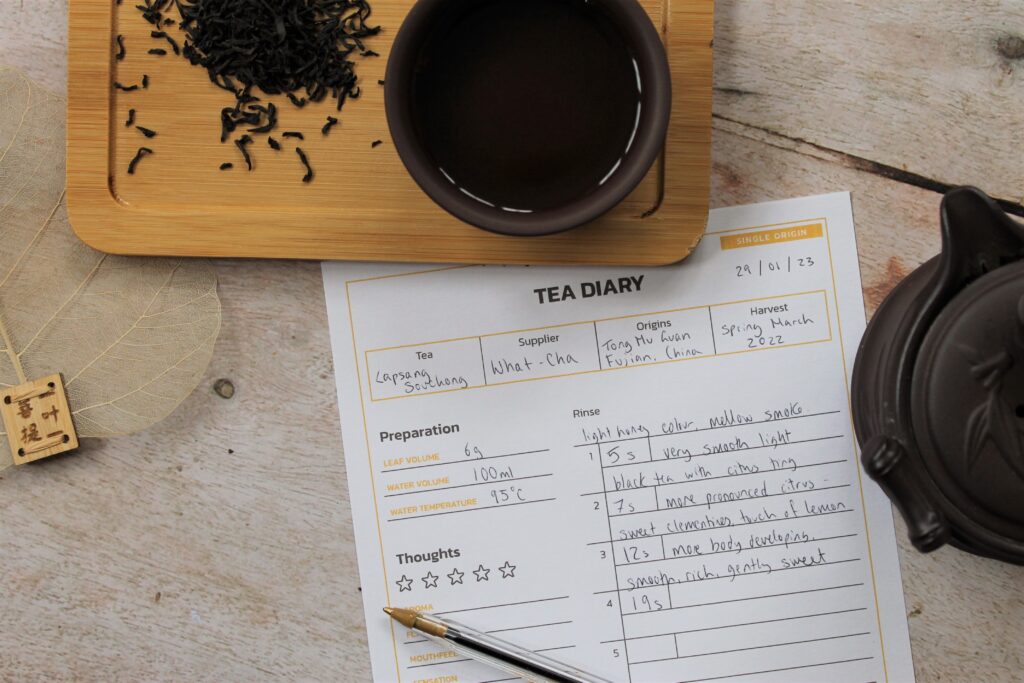At Immortal Wordsmith, I have published hundreds of tea reviews over the years and our tea review website has helped tens of thousands of people find a brew they love. Now, I have something new to offer – the Tea Template Set.
This set of templates includes everything you need to write about tea. Create a tea diary where you record what you have sipped and give your own ratings and reviews.
Here’s what the Tea Template Set is all about.
What’s Included?
This is a complete tea review set, so you can write your thoughts on every cuppa you enjoy. Included in the set:
- A template for flavoured tea blends, e.g. any tea that contains multiple ingredients. There is space to include the ingredients and your thoughts on the aroma, flavour and general tea drinking experience.
- A template for single origin teas, e.g. like a fine Assam black tea from What-Cha or Hebden. This template provides space to record where the tea originated and when it was harvested, plus space to write about your brew.
- A template for gongfu tea ceremonies, e.g. with a gaiwan and multiple steeps. I created this template with space for up to 10 brews, so you can record how long you steeped the tea each time. It is perfect for Eastern brewing styles.
- A template for additional notes or freestyle reviews, e.g. when you run out of space or don’t need a structured template. In the same style, font and colours as the others, this template fits into your tea diary seamlessly and lets you get creative!
All of these templates are available in two sizes and two formats. A4 and A5, as well as Microsoft Word and editable PDF. This means that you can edit the template on your computer (phones and tablets work too) or print it off and write your review by hand.

How to Use the Tea Diary
To use the tea description diary, start by opening up the template you need – this depends on the tea you are reviewing and how you want to brew it. Next, add in the date in the top right corner so you can log it correctly.
Before you get brewing, write down the name of the tea and which brand it is from. You may also want to write down where it originated and when it was harvested, if you are reviewing a fine single origin tea.
Now get brewing!
There is space in the left-hand column to write down important information, such as how much tea leaf you are using and the water volume you will brew it in. The temperature of the water and the length of time you steep the tea for can also be recorded.
Next, in the right-hand column, you can write your thoughts about the tea. Use ‘Dry Aroma’ to write about the dried tea leaf, then the ‘Wet Aroma’ to write about the brewed tea in your cup. There’s extra space to write lots about the ‘Flavour’, and you can also note down the ‘Colour’ of the tea. The way it feels in your mouth (watery? Grainy? Drying?) is written under ‘Mouthfeel’, and you can use ‘Sensation’ to talk about how the tea makes you feel, e.g. relaxed.
Single Origin Tea Reviews
If you have a single origin tea, you might want to brew it in an Asian tea method. Use the Gongfu template to record each steep. Fill in the small box with the timings, e.g. ‘5s’ for ‘5 seconds’ and write your thoughts about that particular steep in the box next to it.
Single origin tea diary templates also have more space to write about where the tea originated, when it was picked, and more. You can always use the additional notes template to expand your session. Perfect for if you run out of space or do more than 10 steeps!

3 Tips for Tea Descriptive Writing
After running the tea review website segment of this blog for several years, I know a thing or two about writing a decent tea review. Here are my three tips to make your tea reviews are functional and enjoyable to re-read.
1. Always Write Down Preparations and Methods
Never skip writing down key info about the tea and how you brewed it. If the tea doesn’t taste very good, or is too weak or too strong, you can refer back to how you prepared it. This means that next time you go to drink this tea, you will brew it differently and (hopefully) enjoy it more!
Noting down when the tea was harvested is also very important. Many loose leaf tea stores will source the same tea from the same farm every year. By writing down the harvest date, you can monitor how the flavour changes year-on-year.
2. Slow Down and Smell the Tea Leaves
Aroma plays a huge part in how you judge a tea. Did you know that smell could make up to 90% of what you taste? The science is still being explored, but you don’t need a scientific study to know that inhaling the delicious aroma swirling up from a cuppa is part of the experience.
I also highly recommend smelling the dried tea leaves before you brew them. Even after years of reviewing teas, I am still staggered by how the leaves of a single tea plant can smell so intensely, richly, and diversly. I have found dried tea leaves that smell of raspberry jam, honey, seaweed, grass, or spices… despite never coming into contact with any of these items.
That is something worth writing about in your tea diary.
3. A Tea Template is Just a Template
Don’t limit yourself to boxes. While my tea diary templates are a wonderful guide to give you pointers of what to think about, you can (and should) go beyond this. Sometimes a tea will have very little aroma but buckets of flavour. Other times, I have taken that first sip of tea and been struck by a poignant memory or thought that I want to write down.
Either by ignoring the boxes on the template or printing off an additional notes sheet, write down whatever comes to mind. This will help you build a tea diary that you want to go back and read from time to time.

Tea Shopping at Immortal Wordsmith
Besides the Complete Tea Diary Template Set, you can find individual templates in our shop too. If you only ever brew in one style, you can simply download the corresponding template and forget the rest. It’s simple!
We also have some great teaware that we have sourced for our shop too. Head to the Immortal Wordsmith Tea Shop to browse all our hand-selected items.
